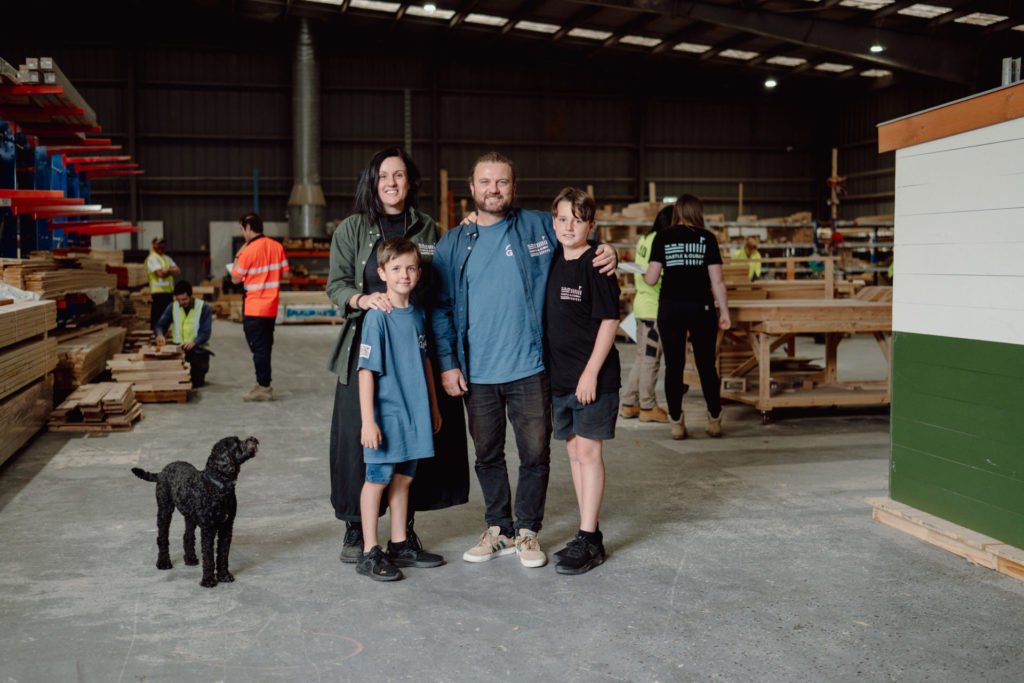While demand for play spaces remains higher than ever in schools, their design and structure continue to evolve to meet the needs of modern students.
National playground equipment provider Castle & Cubby says the last decade alone has seen major changes in how schools approach playground design.
“Over the last eight years working alongside primary schools, we’ve seen a huge change in what schools want from their playgrounds,” owner and CEO Kellie Stones told EducationDaily.
“A lot of primary schools understand children need jungle or adventure playgrounds,” she says. “But what we’re seeing now is schools moving away from traditional stock-standard designs.
“Schools are looking for a stylish, imaginative approach to play spaces that provide opportunities for kids with vulnerabilities.”

Since starting the business in her own backyard, Ms Stones, along with husband and business partner Jonathan Stones, has seen Castle & Cubby provide innovative “play-based learning villages” to hundreds of Australian schools, early learning centres, and childcare centres for more than ten years.
Evolving playground trends
According to Ms Stone, these playgrounds are vital in creating social skills and nurturing a sense of belonging in students’ formative years.
“A lot of the conversations that we’re having around schools is that jungle gyms serve as a vital foundation for kids in grade ones and even into grade two,” she said.
“They’re really looking for opportunities to create those successful transitions where they’re creating safe nurturing spaces for kids as they come into their early schooling years.”
“Unfortunately, some kids begin school very overwhelmed by these spaces, and schools struggle to fill that creative gap in playground design.
As schools push to create a more inclusive learning space, Ms Stones told EducationDaily playground design is evolving to cater to children of all learning abilities.
“There’s a real national push to create inclusive play spaces that entice a wide range of children,” she says.
“There’s been a focus on catering to kids with special needs and learning disabilities, and even looking to provide play opportunities that translate across different faith groups.”
With many schools depending on government grants for funding, Ms Stone says schools want the most “bang for their buck” from their playgrounds.
“Schools are more conscious than ever of their budget,” she says. “They want to know how they can get multiple play outcomes out of their investment.
“And so that’s where we are seeing playgrounds that service imagination play while also offering sensory and natural play.”
Playing safely
While offering several benefits for school children, playgrounds still prove to be dangerous.
Data from 2017 showed more than 680,000 Aussie kids under 16 were treated for injuries sustained in playgrounds in the decade leading up to 2012.
This alarming injury rate has led playground staples like swings, seesaws and carousels to become officially banned in Australian public schools.
With these evolving safety standards (particularly the removal of unsafe playground equipment and a reduction in the height of structures), playgrounds today are safer, and injury rates for the most catastrophic head injuries have significantly declined.
However, as fractures and falls continue to plague children, guidelines are constantly changing every year – forcing many outdated playgrounds to be torn down.
Sustainable play
Over the last decade, Australian schools have seen a national shift towards being “climate-friendly”, and school playgrounds are no different.
Using a mixture of sustainably sourced materials and recycled metals, designers are able to create a unique play space without contributing to the nation’s carbon footprint.
“Sustainability is at the core of all our playground designs,” Ms Stone told EducationDaily. “The need for recycled materials has underpinned all of our decisions, and will continue to in the future.
“It’s important all playground materials that the kids can touch are non-toxic. From the building material to the paint on the wall, it’s important schools continue to focus on providing a sustainable place for kids to interact with.”








